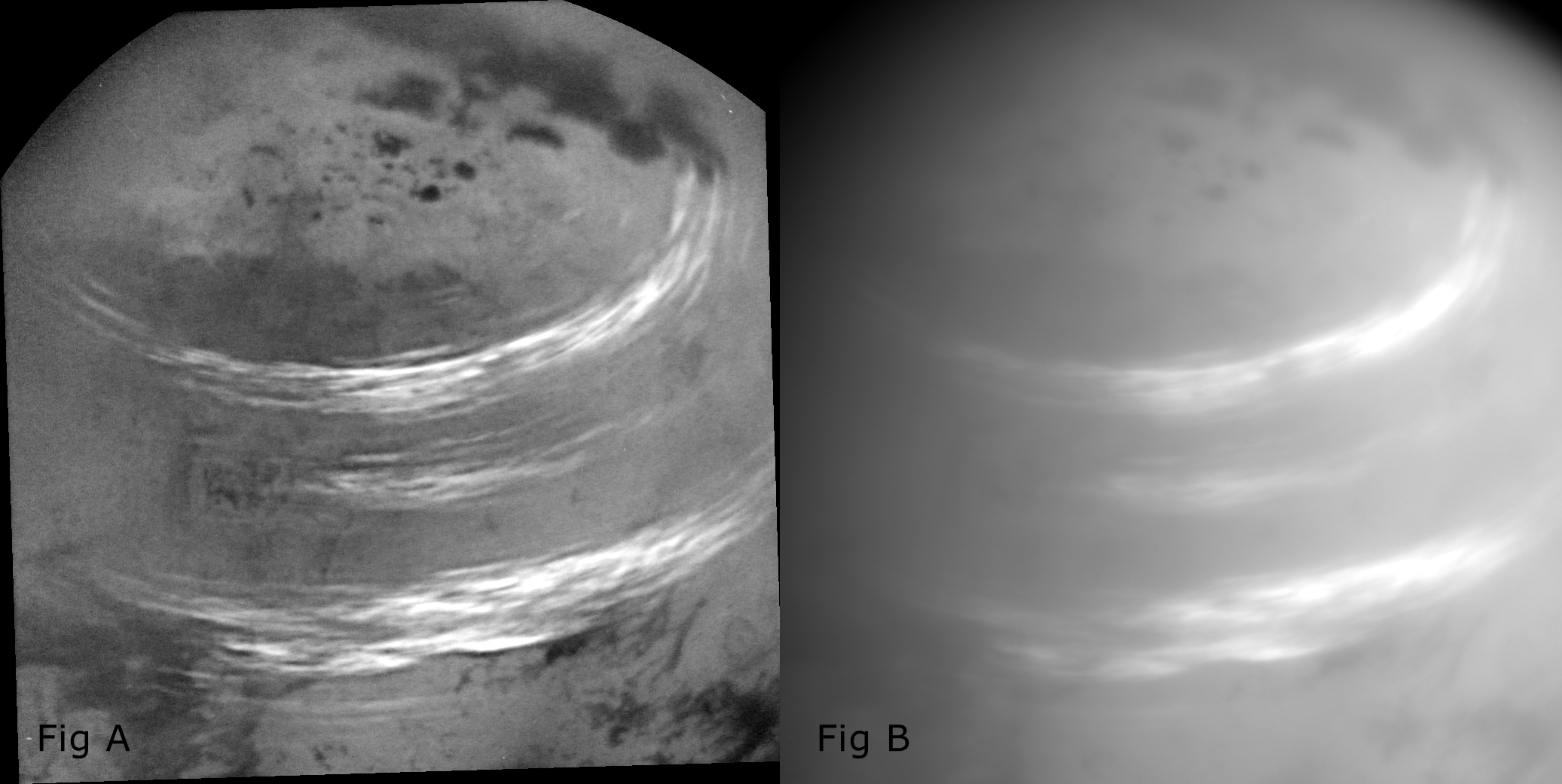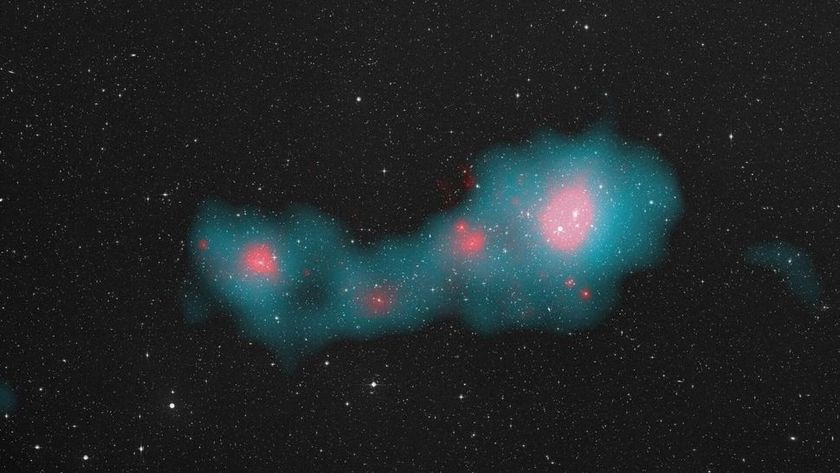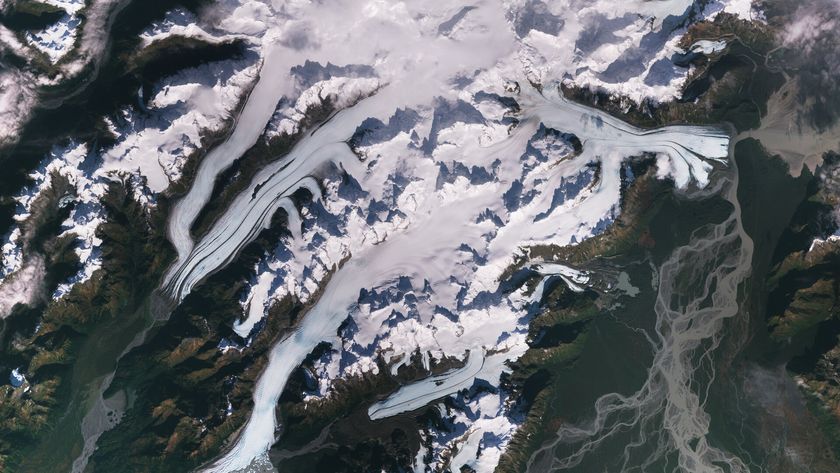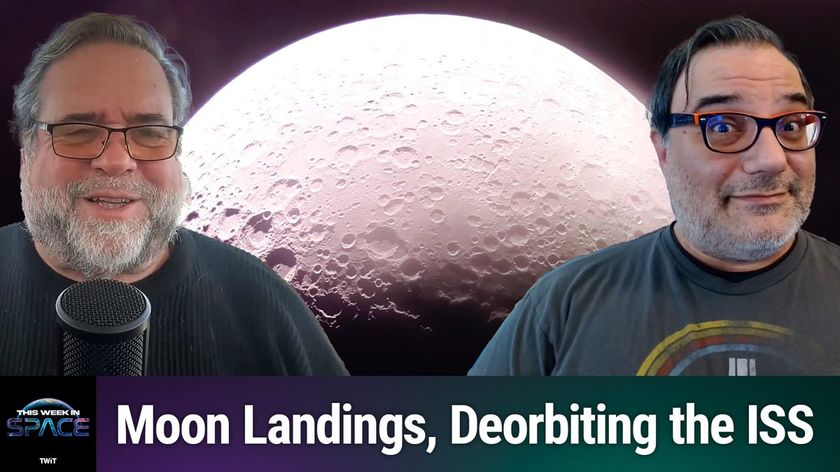Wispy Rings of Clouds Shine in New Photo of Saturn Moon Titan

Wispy bands of methane clouds brighten Saturn's big moon Titan in a striking new image by NASA's Cassini spacecraft.
Cassini took the newly released photo Sunday (May 7), when it was about 316,000 miles (508,000 kilometers) from Titan, NASA officials said.
At the time, Cassini was zooming toward Saturn, getting ready for Tuesday's (May 9) plunge between the gas giant's cloud tops and its innermost rings. The probe has now completed three of these dives, and will perform 19 more before its mission ends this September. [Cassini's Bird's-Eye View of Saturn Plunge Astonishes in Video]
The 3,200-mile-wide (5,150 km) Titan is the second-largest moon in the solar system, trailing only Jupiter's satellite Ganymede in girth. Titan has a thick, nitrogen-dominated atmosphere and a hydrocarbon-based weather system; liquid methane rains from Titan's skies and flows across the moon's surface, collecting in seas and lakes (which are visible as dark blotches near the top of the new Cassini image).
Titan is the only object beyond Earth known to harbor stable bodies of liquid on its surface.
The $3.2 billion Cassini-Huygens mission — a joint effort involving NASA, the European Space Agency and the Italian Space Agency — launched in October 1997 and reached Saturn in July 2004.
In January 2005, the mission's piggyback Huygens lander touched down on Titan's surface, becoming the first craft ever to land on a moon in the outer solar system. The Cassini orbiter, meanwhile, kept cruising around the Saturn system, studying the planet, its iconic ring system and its diverse collection of moons.
Get the Space.com Newsletter
Breaking space news, the latest updates on rocket launches, skywatching events and more!
But that work is almost done. Cassini, low on fuel, will wrap up the current "Grand Finale" phase of its mission with an intentional death dive into Saturn on Sept. 15. This maneuver is designed to ensure that the probe doesn't contaminate Titan or fellow Saturn satellite Enceladus — both of which may be able to support life — with microbes from Earth, mission team members have said.
Follow Mike Wall on Twitter @michaeldwall and Google+. Follow us @Spacedotcom, Facebook or Google+. Originally published on Space.com.
Join our Space Forums to keep talking space on the latest missions, night sky and more! And if you have a news tip, correction or comment, let us know at: community@space.com.

Michael Wall is a Senior Space Writer with Space.com and joined the team in 2010. He primarily covers exoplanets, spaceflight and military space, but has been known to dabble in the space art beat. His book about the search for alien life, "Out There," was published on Nov. 13, 2018. Before becoming a science writer, Michael worked as a herpetologist and wildlife biologist. He has a Ph.D. in evolutionary biology from the University of Sydney, Australia, a bachelor's degree from the University of Arizona, and a graduate certificate in science writing from the University of California, Santa Cruz. To find out what his latest project is, you can follow Michael on Twitter.
Most Popular




